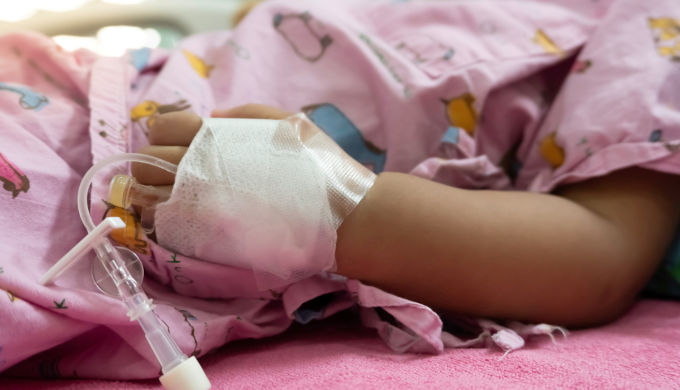Author: Lucy Piper
medwireNews: Distinct subgroups exist among children with Kawasaki disease, say researchers in findings that provide some clues to the clinical variability of the disease.
“Accurate description of Kawasaki disease subgroups might contribute to stratified clinical management and prognostication of risk of coronary artery aneurysm,” say Jane Burns (University of California San Diego, USA) and colleagues in The Lancet Child and Adolescent Health.
The researchers took a data-driven approach in their analysis of 1016 patients with Kawasaki disease who were diagnosed at Rady Children’s Hospital in San Diego between 2002 and 2022.
The children were grouped by hierarchical clustering based on 14 variables, including age at onset, results on 10 laboratory tests, day of illness at the first intravenous immunoglobulin infusion and normalised echocardiographic measures of coronary artery diameters at diagnosis. A total of four subgroups with distinct clinical features were identified.
The first group comprised 157 patients whose main feature was hepatobiliary involvement, with elevated levels of alanine transaminase (median 234 vs 30–47 U/L for the other groups), gamma-glutamyl transferase (203 vs 28–51 U/L) and total bilirubin levels (1.2 vs 0.5–0.6 mg/dL). This group was the oldest at disease onset, at a median 4.5 years versus 1.2–3.3 for the other patients. None of the patients had Kawasaki disease shock syndrome and they had the lowest rate of coronary artery aneurysm (10.8 vs 18.6–36.1% for the other groups). However, they had the highest rate of intravenous immunoglobulin resistance (28.1 vs 8.8–23.0%).
The researchers highlight, therefore, that “[f]or older children presenting with elevated hepatobiliary biomarkers and consistent physical findings, a diagnosis of Kawasaki disease should be considered even if the inflammatory marker levels are not markedly elevated.”
The second group of 231 individuals was distinct due to having the highest percentage of band neutrophils, at a median 24%, compared with 5–9% for the other groups, and the lowest white blood cell and platelet counts (median 9.7 vs 12.3–15.3 x 103/µL and 259.0 vs 304.0–412.0 x 103/µL, respectively). This group had the highest rate of Kawasaki disease shock syndrome, at a median 9.5% versus 0.7–2.9% for the other groups.
Group 3 included 315 children with cervical lymphadenopathy and high levels of inflammation, including significantly raised white blood cell and platelet counts, at a median 15.3 and 362 x 103/µL, respectively. They also had a higher age-adjusted z score of haemoglobin concentration (median –1.8 vs –0.3 to –1.6 for the other groups), a higher erythrocyte sedimentation rate (median 72 vs 42–63 mm/hour) and elevated C-reactive protein levels (median 15.0 vs 5.2–8.3 mg/dL).
The fourth group were the youngest patients (n=313), with a median age at disease onset of 1.2 years. Clinical features included the highest platelet count (median 412 x 103/µL) and percentage of lymphocytes (median 35 vs 12–18% for the other groups). This group also had the highest rate of coronary artery aneurysm (36.1%), the investigators note, making prompt treatment with intravenous immunoglobulin a “priority” for these patients.
Burns et al also found that the subgroups had distinct seasonal and incidence trajectories, with summer troughs for the young subgroup versus August and July peaks for the band and node subgroups, respectively. Winter peaks were seen in the node and young subgroups that were absent for the other two.
In terms of biological influences, the four groups shared a total of 211 Kawasaki disease-associated differential abundance proteins, when 32 patients were compared with 24 healthy children, but there were also 135, 264, 613 and 46 differential abundance proteins that were unique to the liver, band, node and young subgroups, respectively.
“We propose a Kawasaki disease model that involves an intricate interplay between genetic susceptibility and environmental triggers, leading to a common Kawasaki disease pathophysiology that varies in different patients and results in distinct clinical subgroups,” the authors conclude.
News stories are provided by medwireNews, which is an independent medical news service provided by Springer Healthcare Ltd. © 2023 Springer Healthcare Ltd, part of the Springer Nature Group
This independent news story was supported by an educational grant from L’Institut Servier, Suresnes, France.
Lancet Child Adolesc Health 2023; doi:10.1016/S2352-4642(23)00166-9
Lancet Child Adolesc Health 2023; doi:10.1016/S2352-4642(23)00191-8
Image Credits: © reewungjunerr / stock.adobe.com



